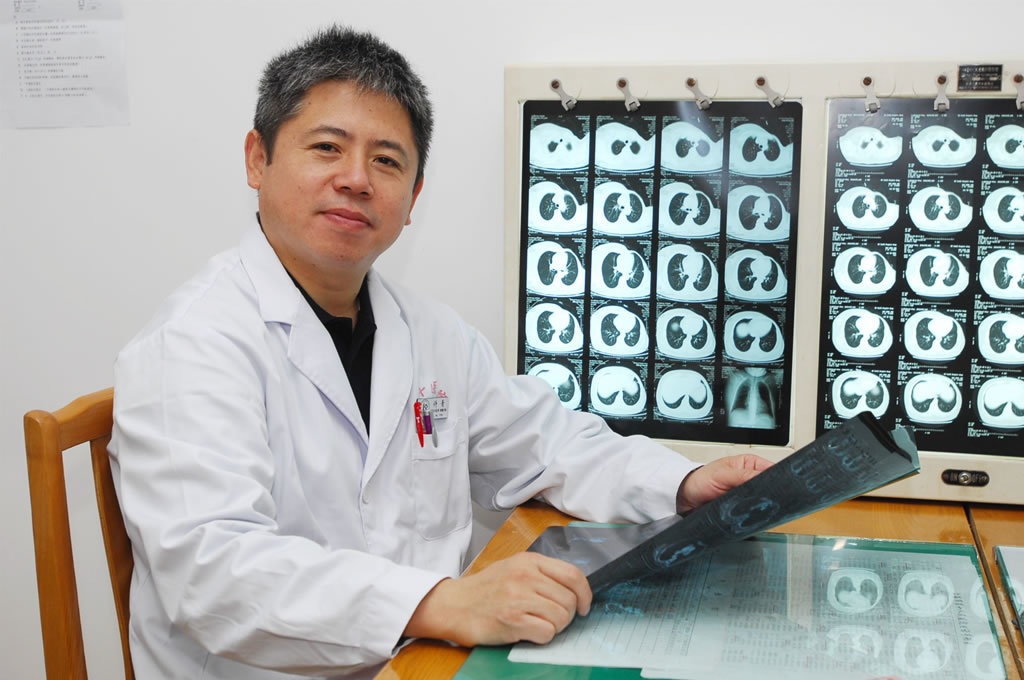

Hypofractionated Radiation Therapy for Localized Prostate Cancer
Guideline statements
指 南 要 覽
Statement KQ1A: In men with low-risk prostate cancer who decline active surveillance and receive EBRT to the prostate with or without radiation to the seminal vesicles, moderate hypofractionation should be offered.
聲明KQ1A:對於低危攝護腺癌患者,如果他們拒絕積極監測,並接受伴或不伴精囊EBRT(攝護腺癌根治性外放療),推薦中等大分割放療。
Statement KQ1B: In men with intermediate-risk prostate cancer receiving EBRT to the prostate with or without radiation to the seminal vesicles, moderate hypofractionation should be offered.
聲明KQ1B:對於中危攝護腺癌患者,在接受伴或不伴精囊EBRT(攝護腺癌根治性外放療)時,推薦中等大分割放療。
Statement KQ1C: In men with high-risk prostate cancer receiving EBRT to the prostate, but not including pelvic lymph nodes, moderate hypofractionation should be offered.
聲明KQ1C:對於高危攝護腺癌患者,在接受攝護腺EBRT治療時,但不包括盆腔淋巴結照射,推薦中等大分割放療。
Statement KQ1D: In patients who are candidates for EBRT, moderate hypofractionation should be offered regardless of patient age, comorbidity, anatomy, or urinary function. However, physicians should discuss the limited follow-up beyond five years for most existing RCTs evaluating moderate hypofractionation.
聲明KQ1D:對於適合接受攝護腺EBRT治療的患者,無論患者的年齡、合併症、解剖特徵或泌尿功能,均應該推薦中等大分割放療。同時,醫生應告知患者目前大多數評估中等大分割放療的RCT研究5年後的隨訪數據有限。
Statement KQ1E: Men should be counseled about the small increased risk of acute gastrointestinal (GI) toxicity with moderate hypofractionation. Moderately hypofractionated EBRT has a similar risk of acute and late genitourinary (GU) and late GI toxicity compared to conventionally fractionated EBRT. However, physicians should discuss the limited follow-up beyond five years for most existing RCTs evaluating moderate hypofractionation.
聲明KQ1E:(醫生)應告知患者中等大分割放療存在急性胃腸道(GI)毒性略微增加的風險,但中等大分割EBRT的急性及遠期泌尿系統毒性反應和慢性胃腸道毒性反應的風險與常規EBRT相似。同時應告知患者目前大多數評估中等大分割放療的RCT研究大於5年的隨訪數據有限。
Statement KQ2A: Regimens of 6000 cGy delivered in 20 fractions of 300 cGy and 7000 cGy delivered in 28 fractions of 250 cGy are suggested since they are supported by the largest evidentiary base. One optimal regimen cannot be determined since most of the multiple fractionation schemes evaluated in clinical trials have not been compared head to head.
聲明KQ2A:由最大的證據基礎支持推薦建議中等大分割放療方案採用6000cGy/300cGy/20fx,或7000cGy/250cGy/28fx。因大多數臨床試驗中多個計劃靶區無法一一匹配進行比較,因此無法確定一個最佳方案。
Statement KQ2B: One moderately hypofractionated regimen is not suggested over another for cancer control for specific risk groups and the efficacy of moderately hypofractionated EBRT regimens does not appear to be impacted by patient age, comorbidity, anatomy, or urinary function.
聲明KQ2B:兩種方案在特定風險組的癌症控制率上並沒有顯示出哪個更優,且中等大分割EBRT方案的療效並不受患者年齡、合併症、解剖學特徵或泌尿系功能的影響。
Statement KQ3A: In men with low-risk prostate cancer who decline active surveillance and choose active treatment with EBRT, ultrahypofractionation may be offered as an alternative to conventional fractionation.
聲明KQ3A:對於拒絕積極監測並選擇EBRT積極治療的低危攝護腺癌患者,可推薦超大分割放療代替常規放療。
Statement KQ3B: In men with intermediate-risk prostate cancer receiving EBRT, ultrahypofractionation may be offered as an alternative to conventional fractionation. The task force strongly encourages that these patients be treated as part of a clinical trial or multi-institutional registry.
聲明KQ3B:在接受EBRT治療的中危攝護腺癌患者中,超大分割放療可作為常規放療的替代選擇。專家組強烈建議將這些患者納入臨床試驗或多中心註冊研究。
Statement KQ3C: In men with high-risk prostate cancer receiving EBRT, the task force does not suggest offering ultrahypofractionation outside of a clinical trial or multi-institutional registry due to insufficient comparative evidence.
聲明KQ3C:在接受EBRT治療的高危攝護腺癌患者中,由於沒有足夠的比較證據,專家組不建議將超大分割放療用於臨床試驗或多中心註冊研究之外。
Statement KQ4A: Ultrahypofractionated prostate EBRT of 3500 to 3625 cGy in 5 fractions of 700 to 725 cGy to the planning target volume may be offered to low- and intermediate-risk patients with prostate sizes less than 100 cm3. The key dose constraints in KQ5B should be followed.
3的中低危攝護腺癌患者,推薦劑量為3500cGy(700cGy/5f)或3625cGy(725cGy/5f)。關鍵劑量限制應遵循KQ5B中的規定。Statement KQ4B: Five-fraction prostate ultrahypofractionation at doses above 3625 cGy to the planning target volume is not suggested outside the setting of a clinical trial or multi-institutional registry due to risk of late toxicity.
聲明KQ4B:由於存在遲發毒性風險,不推薦將超過3625cGy(5f)的超大分割放療用於臨床試驗以外。
Statement KQ4C: Five-fraction prostate ultrahypofractionation using consecutive daily treatments is not suggested due to potential increased risk of late urinary and rectal toxicity.
聲明KQ4C:因為存在增加遠期泌尿系和結腸毒性的潛在風險,不推薦連續五次超大分割放療時每日放療。
Statement KQ5A: At least two dose-volume constraint points for rectum and bladder should be used for moderately or ultrahypofractionated EBRT: one at the high-dose end (near the total dose prescribed) and one in the mid-dose range (near the midpoint of the total dose).
聲明KQ5A:局限性攝護腺癌患者行大分割EBRT時,直腸和膀胱至少使用2個劑量體積限制點:一個在高劑量端(接近規定的總劑量),一個在中等劑量範圍(接近總劑量的中點)。
Statement KQ5B: Use of normal tissue constraints for moderately or ultrahypofractionated EBRT that differ from those of a published reference study is not recommended due to the risk of both acute and late toxicity.
聲明KQ5B:由於急性和晚期毒性的風險,在進行中等或超大分割放療時,不推薦使用已發表參考研究以外的劑量限制。
Statement KQ6A: Use of target volume and associated margin definitions for hypofractionated EBRT that deviate from those of a published reference study is not recommended, especially for ultrahypofractionated regimens.
聲明KQ6A:局限性攝護腺癌患者行大分割放療時,對靶區及外放邊界的確定,不建議脫離已發表文獻之外的數據,尤其是超大分割放療。
Statement KQ7A: IGRT is universally recommended when delivering moderately or ultrahypofractionated EBRT.
聲明KQ7A:在使用中等或超大分割攝護腺EBRT時,普遍推薦IGRT(影像引導放療技術)。
Statement KQ8A: Non-modulated 3-D CRT techniques are not recommended when delivering moderately or ultrahypofractionated prostate EBRT.
聲明KQ8A:在使用中等或超大分割攝護腺EBRT時,不推薦使用非調強的三維適形放療技術。
PDF指南全文獲取
方式一:
後台回復"20190516"獲取鏈接
【AUA指南】攝護腺癌的早期檢測(Early detection of prostate cancer)
 播放GIF
播放GIF








